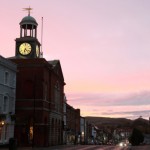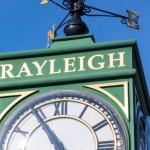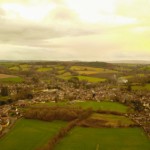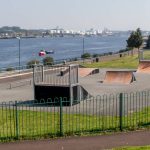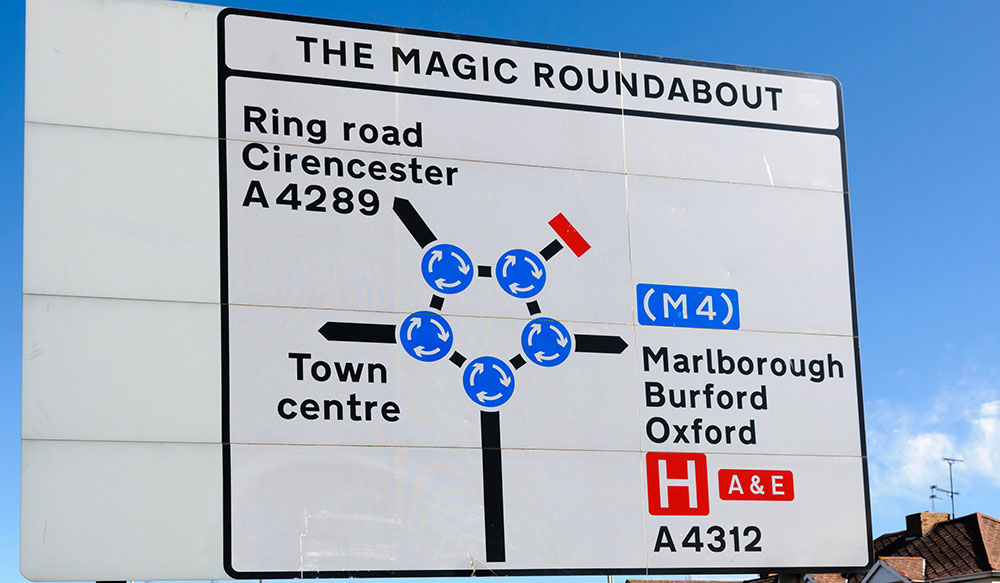
Welcome to Swindon Home of The Magic Roundabout
Found in the beauty of Wiltshire, Swindon is situated in the stunning south-west of England.
Of all the places in England, Swindon is arguably one of the most Anglo-Saxon that there is. It’s all down to the name, which is contested but largely the same, anyway. A Sweyn was a young man in Scandinavian, it was also a pig in Old English. Make of that what you will.
So aside being named for a pig, being on the London to Bristol train line, and having one of the countries scariest road junctions – what does Swindon have going for it? As usual, we here at Five Minutes Spare wanted all the gory details… So hang onto your hats for the five minute guide to Swindon: town on a hill of pigs.
Anglo-Saxon Swindon
It a well known fact that Swindon was an easily defensible hill. This is probably what led to the establishment of a town here, back in Anglo-Saxon times. It is believed to have existed before this, but a lack of archaeological evidence exists to back it up. Probably because, with the greatest of respect, Swindon was the hill where the pigs were bred. Any remains found would likely be pig remains.
Anyway, let’s leave the pigs in the past. Once the Swine were long gone a Saxon village grew, theoretically it would have grown around the farm. By the time of the infamous Battle of Hastings, the town had its very own marketplace. It is recorded as being mostly owned by a thegn of Saxon origin. Around this time.
The next mention of Swindon is in the Domesday Survey. You can view the full entry here, although we will summarise. The town was recorded to have 27 households in the year of publication (1086, 20 years after Hastings). This number of settlers made the town stand out among the top 40% of English towns in terms of size. It was run by a number of landowners.
These entries are always fascinating to browse. One land-owner was Bishop Odo of Bayeux, who had four slaves and made 4 pounds a year from 5 villagers and 2 small houses. Next, Alfred of Marlborough owned 0.8 ploughlands, that made him 12 shillings per year. Wulfric the Hunter owned half a field, another owned 0.8 ploughlands. The last landowner in Swindon in 1086 was Miles Crispin, also known as Odin the Chamberlain. He had the most land, owned the most houses, and kept two slaves. We forget how common slavery once was in England.
The reasons behind the change of hands from the Saxon thegn to the English landowners was to do with the Norman conquest. Odo of Bayeux was the King’s brother and was granted lands for being so special. His followers also benefitted, and much of southern England was freely reassigned.
The Dark Ages of Swindon
After this mention in the Domesday Survey, history around Swindon gets a little silent. We had to dig deep to find out that the land was held by William de Pont l’Arche in the early 13th century. It was a manor estate at that point, although it was divided. Swindon wasn’t considered to be one single estate until the 1640’s according to church records[i].
It is thought that William was a descendant of the William de Pont that was once Sheriff of Hampshire and Berkshire. It is believed that the lands would have passed to his son, also William (imagination didn’t exist yet) who left it to his son, Robert. Robert died really quickly, probably because it was the 13th century and nobody lived to be older than 25. Swindon passed to his brother…er… William. This William did something terrible, because Swindon was seized from him by the then King of England, but given to his half brother who, without a word of a lie, was named William.
In 1252, William de Valence owned Swindon. By 1377 Swindon had passed down through his family (and various Williams) to be ploughing through owners that presumably died of plague. The first outbreak of such would have been from 1349 onwards in this area of the country, having been brought in with the ships. At this point (and through marriages) the lands fell into the possession of the Earls of Shrewsbury.
In 1541 the manor was sold off and ended up belonging to the Tame family. Through them, the whole estate passed to one Thomas Goddard. Six generations of his family would hold the region, right down through time until the turn of the 18th century. Up until around 1697 Swindon was a village, smallholding, and had no more than 600 residents. While it was considerably sized in the Domesday Survey in 1086 – it didn’t seem to grow too large afterwards.
Swindon House was finally demolished in 1952. It must have been a sad thing to see.
Some Fun Facts About Swindon
Let’s break up the sad part of the Swindon story with some fun and interesting facts. We always manage to dig up some interesting titbits when we dig up more on an area… Swindon did not disappoint…
- Swindon is (almost) officially claimed to be home to one of the worst, most downright confusing, high-incident junctions in the whole of the UK[ii]. The lovingly (!) named Magic Roundabout has residents regularly infuriated on a daily basis. Commuters will drive literally miles just to avoid this one junction. We’re not going to tell you where it is…
- Swindon was one of the first towns in the UK to introduce the concept of a ‘living wall’ – that’s a wall that hosts plant life, helping to incorporate nature and urban living in one place.
- Spitfire Planes were built here… obviously after the 15th century because planes weren’t around yet.
- The David Murray John Tower was designed by architect Douglas Stephen… a communist, but a fine builder…[iii]
- Ian Fleming, writer of James Bond, is buried in the churchyard at St. James church. He had several properties I the area and it is though that he took inspiration from it for his books. If you plan on a pilgrimage be respectful.
- As a mark of respect for the author, some of the scenes in the bond movies were actually shot in Swindon.
So it might have been a sleepy little town up until 1697, but since then it has seen a lot. Let’s get back to the history and find out what exactly has been happening there for the last few hundred years.
Swindon from the 18th Century Onwards
Swindon next pops up in history in around 1697, where local histories have it at a population of 791 people. By the turn of the 18th century this had increased to 1,198 people. In that whole hundred years, it seemed, not much progress was made. The Industrial Revolution took hold and drove the town to success.
Before it hit, however, history says Swindon had four annual fairs – three times more than most. People flocked to the barter market here – mostly to buy livestock… no more pig jokes, we promise. It was described as a small and genteel town.
In 1810 the Wiltshire and Berkshire canal reached the town, bringing great trade and kickstarting a variety of new additions. 9 years later the North Wiltshire Canal doubled that trade. Livestock flourished, or something, because the population by 1831 had expanded by 600 people more than it had in a thousand years. In 1840 the Great Western Railway ploughed through Swindon on its way out of London. This ultimately changed the town forever.
In 1843 a train building works was opened here, causing the railway company to move workers into a specifically designated village, about a mile north of town. In 1842 Bath street was built to accommodate this, and the birth of Swindon as we know it today emerged.
In 1845 the first church was consecrated and by 1851 the town was calling itself New Swindon. By 1881 the population had swollen to 15k – but it still wasn’t one place. In 1866 sewers were dug out and built, running water came in ‘68 of the same year. Weirdly, the town residents had water before that – but it wasn’t clean. It was canal water…
Before health boards were created in 1894 there were outbreaks of disease in the town… that’s what happens when you drink canal water for too long. Cholera, Typhus, and smallpox are three reported diseases. Child mortality rates were high, and the plague was not unheard of[iv]. Public health was shocking. The introduction of sewer systems and fresh running water did a lot to change this.
By the end of the 19th century Swindon was almost bearable. In 1894 the Urban District Councils were introduced and suddenly there was someone in charge of the whole mess. Diseases receded, gas streetlights kicked in. and a hospital was even added. It was shortly followed by a new cemetery as the town was, at this point, hellishly overcrowded.
It wasn’t until 1900 that the old Swindon and the New Swindon became one place. An electric plant shortly followed as the town’s population hit the 50k mark.
Famous People from Swindon
Swindon has seen many a famous face over the years. We already mentioned the James Bond links, as author Ian Fleming was buried here… but what other famous names hail from these streets? We found out, of course…
Famous Swindon faces include:
- Actress Billie Piper, from Dr Who, hails from Swindon.
- Diana Dors, golden age actress from the Hollywood Silver Screen, was Swindon born.
- Dean Ashton, the West Ham United Footballer, came from here.
- Rick Davies, of Supertramp, was born here.
- So was radio DJ and comedian, Mark Lamar.
Wikipedia have a full list of famous people from Swindon but be warned – there are loads of them!
19th Century Swindon
During the First World War, Swindon participated in the buddy regiment scheme. As a result, some 1,000 young men (who all would have been groups of friends) were KIA. When the first war ended the town had to build council houses, to accommodate for the extra bodies moving out of London for safety. At the start of WWII Swindon had a population of a little over 61,000, in spite of this horrible loss.
Swindon was a factory and manufacturing town. It was immediately recognised as a town likely to be bombed. 48 people ultimately died at the hands of German bombers during WWII. One cow is also recorded as being hit by a bomb after a single drop in Coate. You can read more about it over on Swindon Web.
After the war, Swindon was designated as an overspill town. These were places that the government moved people to, in order to make the city safer. 14,000 people moved out of London and into this once-sleepy suburb. Whole areas of land were designated council estates, the manor house was knocked down and, in ’72, the fabled roundabout was added. The railway works finally closed in the 1960’s but there has been plenty of industry in the car and vehicle production industry. Even to this day, you can still buy a Swindon-made car.
The Wiltshire and Swindon History Centre have more information on particular aspects of Swindon history. You can contact them by following this link if you need more specific information.
Swindon Attractions
Swindon is home to some awesome sights and sounds, so if you are spending time there it is hard not to be inspired. We put together some of our favourite attractions, just for you. Looking for things to do in Swindon? We know exactly where you should go…
Sport
Swindon Town are the main sporting attraction and will always be a football team have their own place in history. Why I hear you ask? Well, back in 1969 as a lowly 3rd division club they had the audacity to beat the Mighty Arsenal 3-1 in the League Cup Final. This should have granted them a place in the Inter-Cities Fairs Cup (now the Europa League) however the rules of the time meant that only Division One clubs could compete, so sadly they missed out. They got some consolation though as the Anglo Italian Cup was introduced soon after, partly because of this and they won it in 1970. They have reached the semi-finals a couple of times since, and in the 1993/94 season, they actually played in the Premier League! Currently, they are in the fourth tier League 2, but they are pushing for promotion in the 2019/20 season. Anyway if you fancy taking in a game they can be found at the County Ground which has been their home since 1896! The ground capacity is over 15,000 so currently, you should be able to pay at the gate unless its a big cup game. However, you might as well book a ticket which will also give you a souvenir of the occasion.
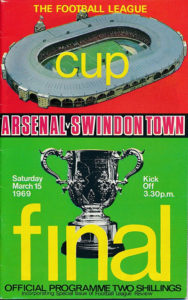
Swindon Towns Finest Footballing Moment. Lifting the Trophy in front of 98,189 fans at Wembley.
Historic Sights and Landmarks
Lydiard Park is one of the top things to do in Swindon. It is a manor house on a beautiful estate complete with a park, walled gardens, and its own shop. It’s got woodland, picnic areas, a fine house to browse around… it’s just stunning.
If you head out of town towards Liddington you will come across a local Bronze Age fort. This is a rare piece of preserved history that all should see. Locally, the fort is known as Liddington Castle. The grounds and layout are best seen from the air if you have a drone.
If ruined castles aren’t to your liking then St. Mary’s Church still stands from a few hundred years ago. You can visit it and even attend a service. St Mary’s Lydiard Tregoze is one of the most unique sets of preserved wall paintings of religious art in England. Pay it a visit before the rain washes it all away. There are several other religious attractions in the town of Swindon that may be worth your attention. St Sampson’s Church can also be found in nearby Cricklade.
Nature and Wildlife
Some of the best things to do in Swindon involve the great outdoors. Take Roves Farm, for instance. They combine a petting zoo area with an indoor adventure play barnyard. You can let the kids run free while you enjoy their café, or you can rent a space for a birthday party. Perhaps best of all is the camping area so you can make a long weekend or a holiday of it.
You can find another animal experience at the Farmtastic Animal Farm. This petting zoo is run by volunteers, includes more than a hundred animals, and is a great way to pass an afternoon in Swindon with kids.
For a farm with a little difference, try Lotmead Farm in Swindon. This place focuses on fruit picking. Pick your own, take it home and turn it into jam! There is a farm shop as well as a kid’s indoor play area and animals to pet. As well as all of the above – they have an events license, so you can have your birthday party here…
Museums and Galleries
There is a small museum dedicated to computing in Swindon. It isn’t a common theme since computers are less than a hundred years old – at least in the form, we recognise them. What does exist, though, is held on the internet, and in places like this. The Computing Museum is actually the first of its kind in the whole UK.
The Swindon Museum and Art Gallery is a council run facility that records the history of the area. There are exhibits on the local area, the geology and some archaeological exhibits. It’s a great place to find out about the local culture. One of the biggest impacts in the town’s history was the railway, however, and that has a museum all of its very own.
If you want fine art, try the Artsite. As well as exhibits from local artists you will find theatre productions, Christmas markets, and all sorts of other entertainment. Try the Wyvern Theatre too for a concert or event. They are a local theatre and arts centre, so if you live in Swindon and want to put on a show of your own? This is where you go.
Shopping
If you want to go shopping in Swindon, then there is only one indoor ‘mall’. The Brunel shopping centre is in the heart of town and contains more than a hundred shops though, so you are pretty much covered. There is also the Swindon Designer Outlet for those who like a higher end shopping experience. They have fewer shops, but you are almost guaranteed to spend more money.
Where to Eat, Drink and Party in Swindon
If you want to feed a family of nine in Swindon, then head to Linden Court. The JR Global Buffet gets rave reviews for its all-you-can-eat deals. Farmhouse inns have another chain of good quality family restaurant in the area. If you want fine dining, try the Casa Paolo on Common Platt, instead.
The Hop Kettle Tap and Brew is a much cherished pub in Swindon. Whether you want an all-nighter or a quiet pint, you should find it there. Level 3 is where you ought to go for a dance though. Equally, reflex is a good place if you want somewhere to hire out.
Other Notable Attractions
There are so many awesome attractions in Swindon that we couldn’t fit them all in. So if you are spending more than a few days in town, try to see these Swindon sights, as well:
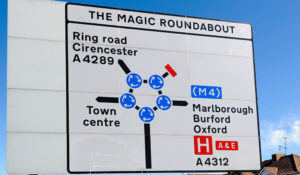
The legendary Magic Roundabout – probably the UK’s scariest road junction! Image Stephen Barnes/Shutterstock.com
- The Crossing – is the place in the Shopping Centre where the cool kids hang out on a weekend. It’s also where you find every fast-food place you could ever need.
- The Magic Roundabout is actually so much of a running joke that it has its very own TripAdvisor listing…
- The Rainbow Walk is an interesting attraction. This stairway was painted to celebrate Pride Week and makes for one of the cheeriest places in town.
So you should always be able to find something to do in Swindon, no matter your tastes.
How to get there?
We have covered just about everything there is to know about travelling to Swindon – except how you actually get there.
By Road
If you head for Bristol leaving London, you will eventually pass Swindon. That’s the M4 for those that aren’t local.
By Air
Bristol airport is your nearest air destination. It is only an hour away once you get out of the maze.
By Sea
Swindon is not connected by sea; however, the River Ray does flow near enough through it that you could sail there.
By Rail
Swindon Wilts is the main train station although you should find more than one in the area.
Got Five Minutes?
Have you enjoyed our mini-guide to Swindon? Are you looking to plan another adventure? Head on over to Five Minutes Spare. Learn a new hobby, indulge in some reading, or plan the itinerary of your next trip… all with the help of our local guides.
[i] https://www.british-history.ac.uk/vch/wilts/vol9/pp119-124
[ii] https://www.totalswindon.com/community/7-things-you-didnt-know-about-swindon/
[iii] https://www.swindonadvertiser.co.uk/yoursay/blogs/11278935.10-swindon-fab-facts-did-you-know/
[iv] https://www.british-history.ac.uk/vch/wilts/vol5/pp318-347

